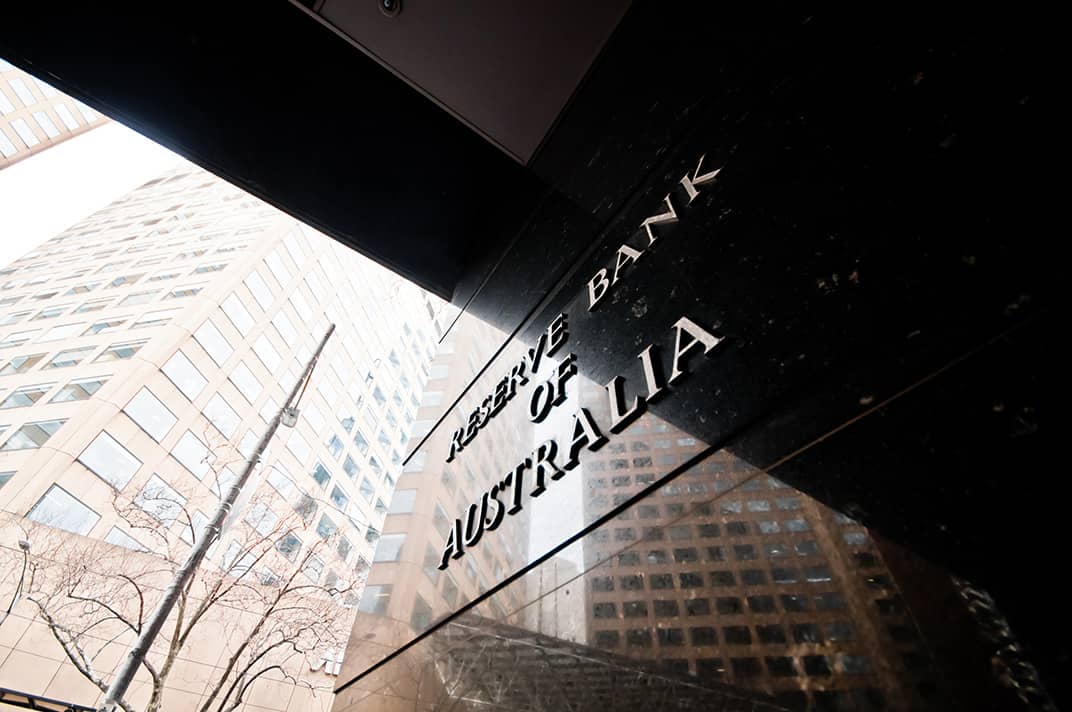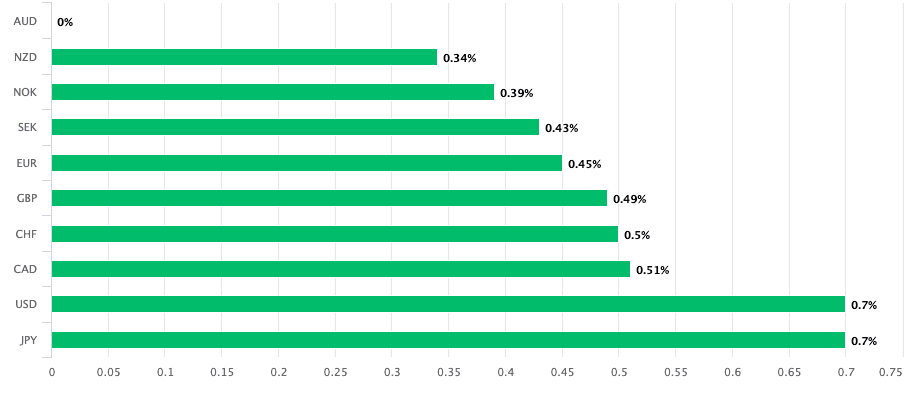
Image © Adobe Images
The Aussie Dollar strengthened after the Reserve Bank of Australia (RBA) bottled another interest rate cut.
The market thought today would see another interest rate cut from the RBA, but the central bank opted to leave the cash rate at 3.85%.
Expectations were for another 25 basis point cut, but Pound Sterling Live has been reporting over recent days that this assumption was at risk of being proven wrong as the RBA would be too concerned about inflation, and that the Australian Dollar might rally as a result.
The call was proven correct, and we are seeing widespread AUD gains:
The Pound to Australian Dollar exchange rate (GBP/AUD) is down half a per cent on the day at 2.0841, the Euro to Australian Dollar is down a similar margin at 1.7946 and against the U.S. Dollar, the Aussie is up three-quarters of a per cent at 0.6538.
"Australian swap rates jump more than 12 bps at the front end of the curve, allowing AUD/USD to recover most of the losses incurred yesterday and thereby preserving the upward sloping trend channel," says an analyst note from KBC Bank.
"Following the announcement, the Australian dollar strengthened," says Shane Strowmatt, analyst at LGT Bank. "The market had anticipated a 25-basis-point cut, but recent inflation figures, while at a four-year low, showed slightly stronger-than-expected trends."
The statement reveals the RBA has been watching the flow of monthly inflation data releases, which inform the more complete quarterly inflation prints. It is the central bank's view that "they were, at the margin, slightly stronger than expected."
"With the cash rate 50 basis points lower than five months ago and wider economic conditions evolving broadly as expected, the Board judged that it could wait for a little more information to confirm that inflation remains on track to reach 2.5 per cent on a sustainable basis," said the RBA.
The labour market is also judged to be healthy by the RBA, lessening the need to cut. Central banks tend to cut interest rates in order to support the economy, but it is the judgment that there is no need to rush at the RBA.
This can keep Australian bond yields, which take a lead from the cash rate, relatively elevated compared to elsewhere. Given money chases higher bond yields, such a development is considered supportive of the Australian Dollar.
Constantin Bolz, Strategist at UBS Switzerland, says on this basis, the Aussie looks attractive: "The Australian dollar should also profit from a weakening USD, as Australian yields remain among the highest in the G10, while Australia's low position on the U.S. trade deficit list should limit the direct impact of the trade war."
There has been a flurry of trade headlines for the currencies to consider, with the U.S. unveiling the tariff levels it has decided.
However, markets have taken the developments in their stride, noting that the U.S. has pushed back a final deadline for tariffs to August 01, while strongly hinting that it continues to negotiate.
This means the overall tariff rate should continue to come down.
For currencies that are highly sensitive to tariff-induced sentiment shifts, such as AUD, the news is supportive.

